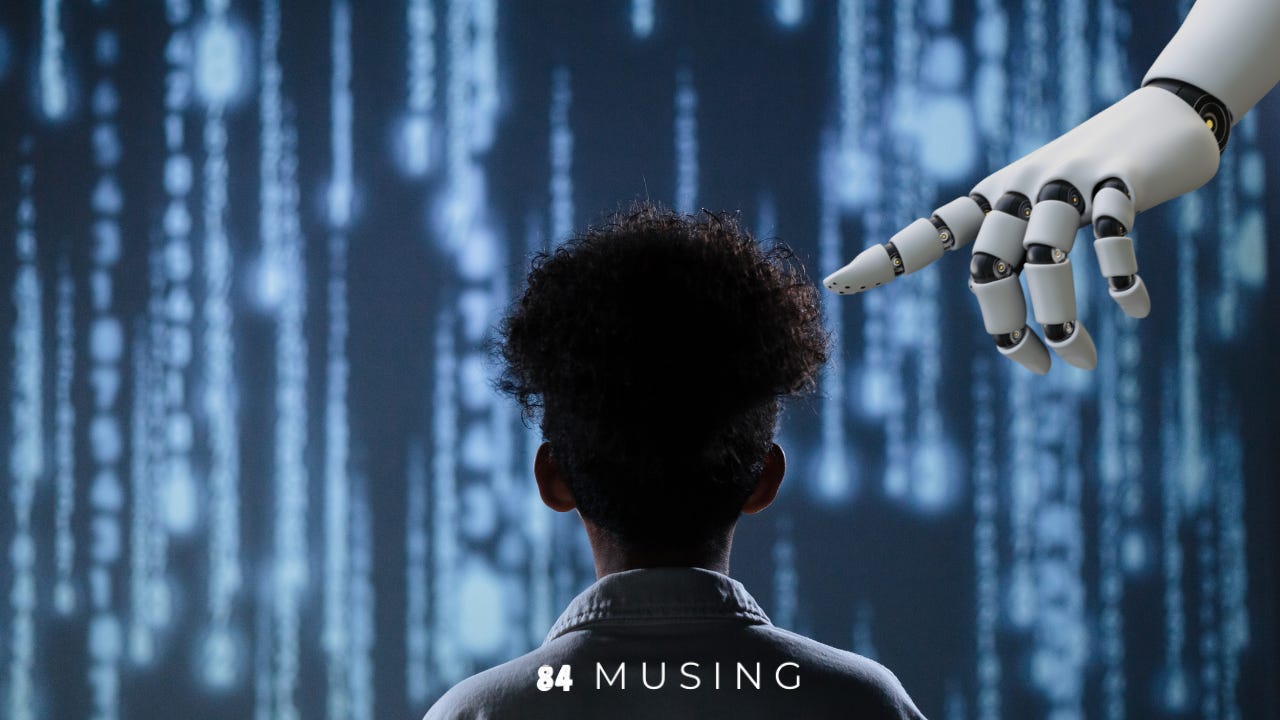When AI Stops Asking and Starts Acting..
Forget focus groups and customer personas. The most powerful gatekeepers in marketing today are autonomous agents making micro-decisions at scale. Are you prepared to speak their language?
As we move deeper into 2025, marketers across the world region are waking up to a quiet revolution—one that could fundamentally redefine their roles, workflows, and strategic priorities.
It’s called Agentic AI. And it doesn’t just advise. It acts.
Unlike traditional AI tools that generate content or offer data-led suggestions, Agentic AI operates with autonomy. It can make decisions, take steps, initiate campaigns, personalise content, and even optimise entire workflows—all without direct human intervention.
This marks a significant shift: from AI as a co-pilot, to AI as a trusted agent.
I am by no means an expert on this topic but this is my takeaway. First lets define Agentic AI :
Agentic AI refers to AI systems that can operate autonomously, make decisions, and take actions with limited human intervention to achieve specific goals. Unlike traditional AI, which often follows predefined rules and relies on human input for each step, agentic AI can analyze data, learn from it, adapt to changing situations, and optimize outcomes independently. This capability allows agentic AI to handle complex, multi-step tasks and workflows with greater efficiency and adaptability.
Now, lets see how this may or could apply to us marketers..
From Assistant to Agent
Picture this: instead of recommending a new restaurant for a customer, Agentic AI books it, checks dietary restrictions, reschedules based on calendar conflicts, and follows up with a review prompt—all on its own.
In a marketing context, this means that brand communication is no longer simply customer-facing. It is agent-facing.
In other words: we are no longer just selling to people. We are now persuading their AI agents—intelligent filters that act on their behalf. And if your brand doesn’t surface in that AI's decision tree, you may not be seen at all.
The APAC Marketing Landscape in 2025
From my experience, marketers across the region are already leaning on AI for:
Automated content generation (text, images, video)
Predictive analytics and campaign forecasting
Deep behavioural insights and audience segmentation
Agentic AI takes this a step further. It automates execution, manages multi-channel rollouts, adapts creatives in real-time, and handles customer interactions with contextual awareness.
This isn’t just automation. It’s autonomy.
Redefining the Marketing Workforce
IDC forecasts that by 2028, up to 20% of marketing functions could be performed by AI agents, allowing human professionals to shift into roles that are more strategic, creative, and ethical in nature.
Repetitive tasks such as resizing visuals, A/B testing, and email scheduling? Automated.
Human input will move towards crafting brand voice, aligning AI behaviour with brand values, and defining creative and ethical boundaries.
In short: marketers won’t be replaced—they’ll be redefined.
AI Governance Becomes a Marketing Priority
As Agentic AI takes action on behalf of consumers, the responsibility for its behaviour shifts from IT departments to marketing and brand teams.
Real-time oversight becomes essential: Are these agents behaving in line with brand voice? Are they making biased decisions? Are they staying compliant?
AI literacy becomes critical: Marketers must now understand how prompts work, how agents learn, and how to debug decisions gone wrong.
Expect “prompt engineer” and “AI compliance lead” to become standard roles within your marketing team.
Rise of LLM Optimisation (LLO)
Much like SEO dominated digital marketing in the 2010s, LLM optimisation (for large language models) is poised to take centre stage in the era of Agentic AI.
Brands must now structure their content, metadata, and brand messaging in ways that are readable and preferred by AI agents. IDC predicts that LLM optimisation budgets could soon outstrip traditional SEO and paid media.
This includes:
Rewriting product descriptions for LLM consumption
Partnering with AI platforms to ensure brand inclusion
Re-engineering marketing infrastructure to support agent-based decision-making
What Marketers Can Do Now
To stay ahead of this shift, I recommend:
Build a bank of Agentic use cases: trial campaigns, test agents, track wins and pitfalls.
Create a cross-functional “AI brain trust”: marketing, tech, legal, and product teams aligned to guide implementation.
Upskill your team: prompt design, ethics, AI systems thinking—these are the new foundational skills.
This isn’t about becoming an engineer. It’s about becoming fluent in the tools shaping your audience’s decision-making.
A New Era of Influence
Let’s be clear—Agentic AI isn’t just another marketing tool. It’s a paradigm shift.
Instead of only competing for consumer attention, marketers must now also compete for AI agent attention. This introduces a new kind of audience—non-human, but deeply influential.
Brands that fail to adjust may find themselves excluded not by people, but by their proxies.
Those that lean in—adapting content for agents, designing ethical frameworks, and rethinking campaign architecture—stand to gain a new kind of advantage: influence in the invisible economy of AI-to-AI decision making.
The Marketer as Systems Architect
The marketer of 2026 won’t just be a storyteller or strategist.
They’ll be a systems architect—designing experiences not just for people, but for agents acting on their behalf. They’ll be the guardians of brand voice in an algorithmic world. They’ll train, supervise, and collaborate with digital agents. And they’ll do so with a sense of responsibility, creativity, and ethics.
Agentic AI is not here to take your job. It’s here to challenge you to become something greater.
RV,
Signing off for 84 Musing









